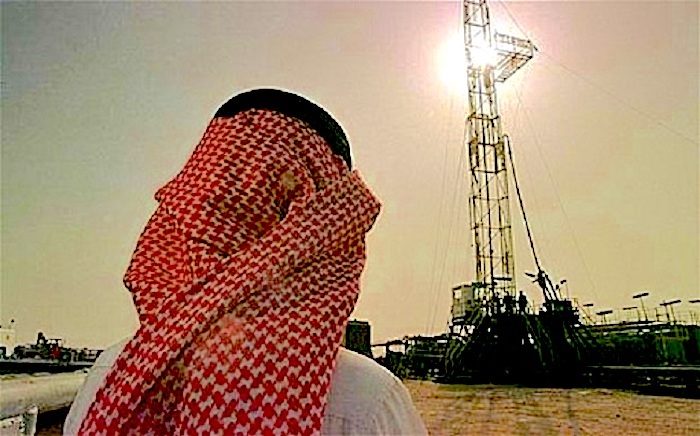
© AP/John MooreSaudi Oil
Qatar's Al Jazeera broadcaster has shared what it calls satellite imagery showing the damage dealt to a Saudi oil station in a Houthi drone attack.
According to Al Jazeera, the images were taken one day after the attack on Saudi Aramco's pumping station 8, located some 330 kilometres west of the kingdom's capital, Riyadh.Satellite image analysis is said to have shown a four-metre fracture in the tube, which resulted in crude oil leaking over an estimated area of 1,000 square meters.
It is understood that the precision of the attack, which apparently hadn't affected the nearby administrative and residential buildings, rules out claims that the pipeline hit was coincidental.

© UnknownSaudi oil facility
While Riyadh is yet to comment on the images, Saudi officials
confirmed last Tuesday
that pumping station 9 was also targeted in the drone attacks. The two stations sit along the key East-West pipeline, which stretches across the entire peninsula from the Abqaiq oil field in the east to the Yanbu oil terminal on the Red Sea coast.
Riyadh
claimed that the attacks were ordered by Iran and carried out by Houthi militants, who are fighting against the Saudi-led coalition in Yemen.
Iran rejected the accusations, while the Houthis claimed responsibility for the operation. Yemen's Houthi-run Almasirah TV channel quoted a military spokesman as
denying that Iran directed the strike and said that the rebel movement was manufacturing drones locally.The attack came "in response to the continued aggression and blockade of our people and we are prepared to carry out more unique and harsh strikes," the official said, according to Almasirah.
The strike did not disrupt oil production or exports, but led Saudi Arabia to temporarily halt pumping crude oil via the pipeline.
Days later, the coalition said in a statement via a Saudi broadcaster that it had struck military bases, facilities and weapons storage sites with the aim of "neutralising the ability of the Houthi militia to carry out acts of aggression".Prior to the attack on the oil facilities, two Saudi oil tankers were damaged in what Gulf officials described as an "act of sabotage".
The Houthis have repeatedly targeted military and oil facilities inside Saudi Arabia with rockets, but have been increasingly utilising drones as well.
According to Yemen's state-run SABA news agency, the rebels plan to attack another three hundred targets, including Saudi and Emirati military and strategic sites.Since early 2015, Yemen has been in the grips of an armed conflict between government forces led by President Abd Rabbuh Mansur Hadi and the Houthi movement. The Houthis have taken control over swathes of the country, including the capital Sanaa, forcing the internationally recognised president to flee and later request military assistance from the Arab League, which ultimately resulted in a Saudi Arabia-led operation against Houthi positions in Yemen.


Comment: See also: